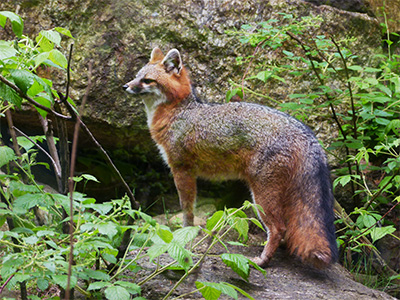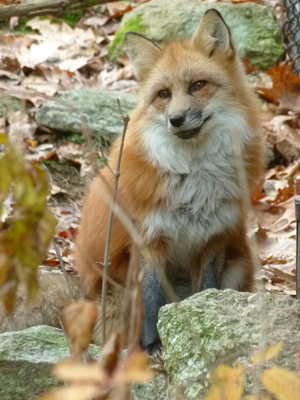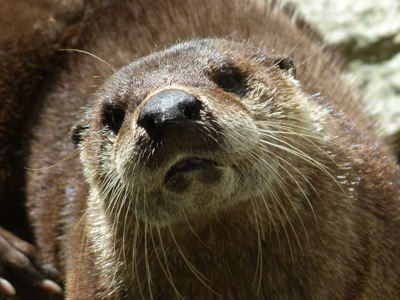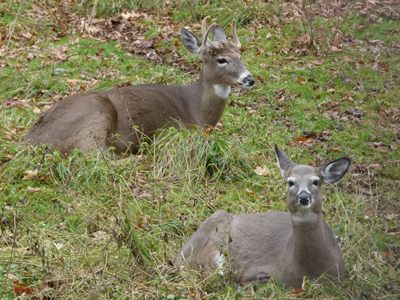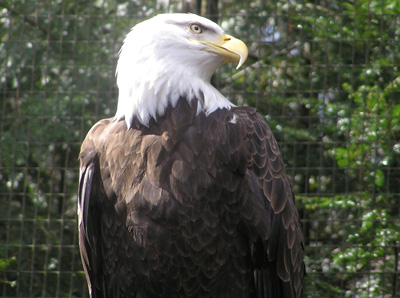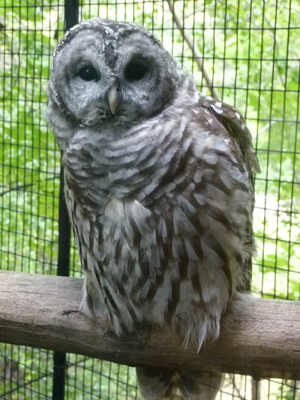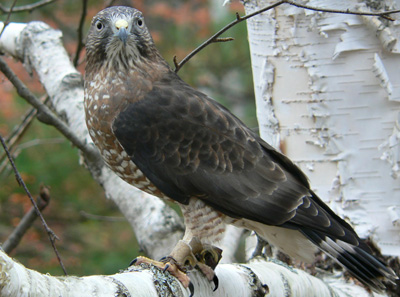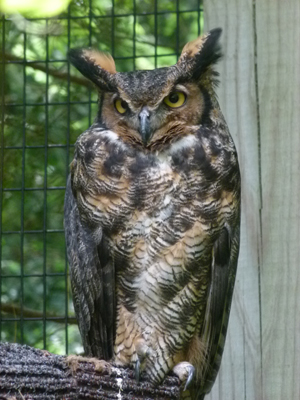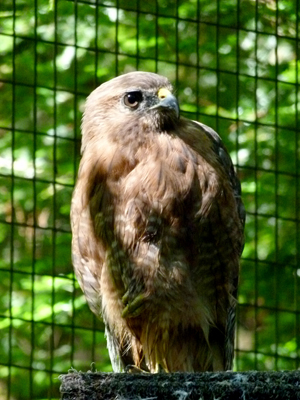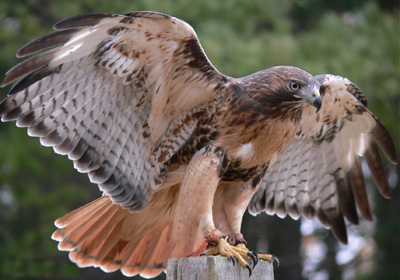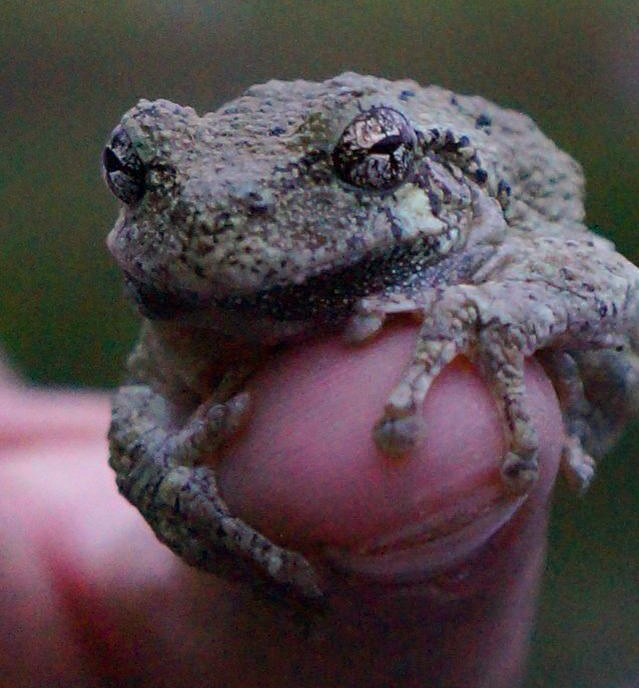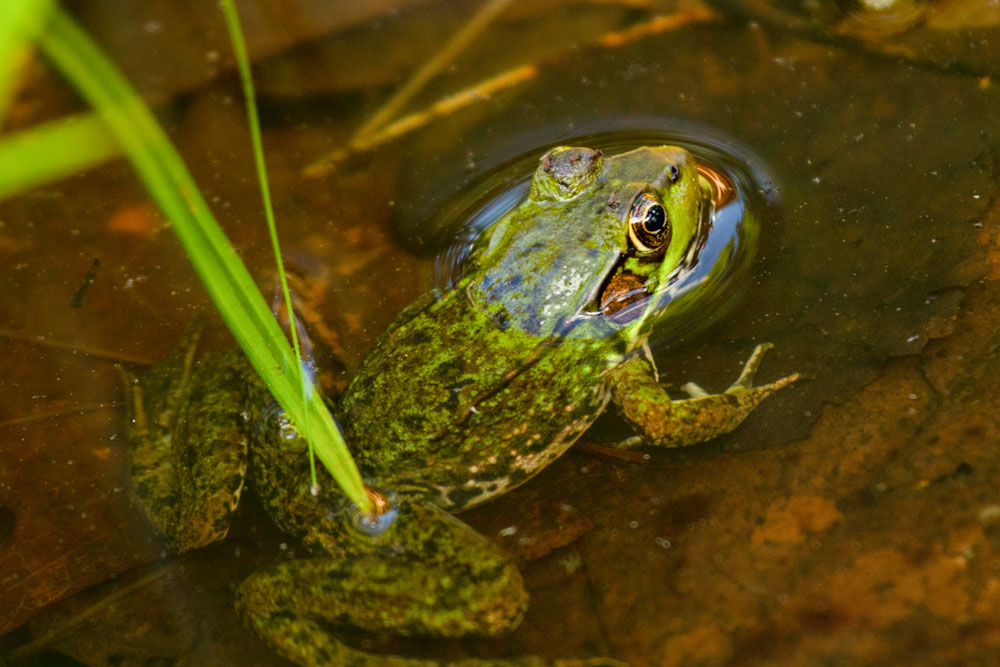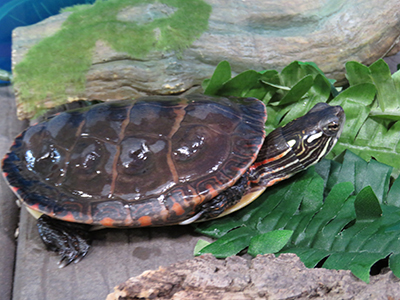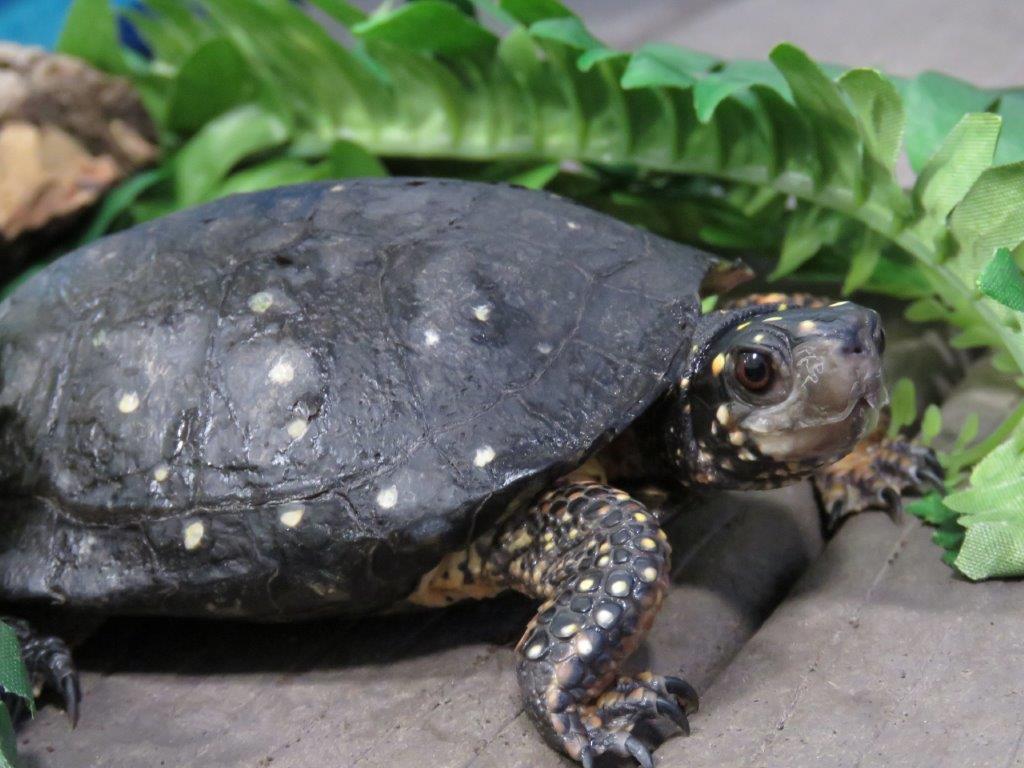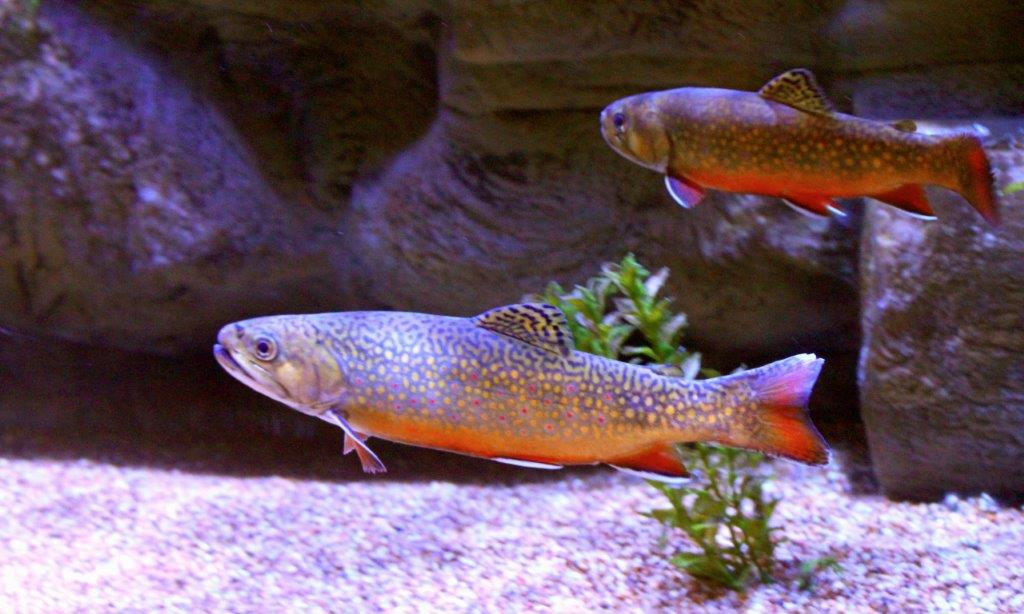Black Bear
Ursus americanus
| Kingdom | Animalia |
|---|---|
| Phylum | Chordata |
| Class | Mammalia |
| Order | Carnivora |
| Family | Ursidae |
| Genus | Ursus |
| Species | U. americanus |
| Lifespan | Maximum in wild 20-25 years (90% of mortality in bears older than 18 months is human related in some way) |
| Size | 50-75 inches long, weight 150-600 pounds |
| Offspring | Usually two or three cubs |
| Speed | 3 mph walking, up to 30 mph running |
| Status | Common in New Hampshire |

About Black Bears
Are American black bears always black?
American black bears in the northeast are generally black, often with a white patch on their chest. In western parts of their range they can also be various shades of brown or in southeastern Alaska and coastal British Columbia even blond or bluish gray.
Where are American black bears found?
American black bears live in most of Canada as well as Alaska and many of the other forested continental states. Bears often inhabit inaccessible mixed stands of conifers and hardwoods with thick under story and swampy areas. Home range for bears varies from about 10 square miles for females and up to120 square miles for males.
What do American black bears eat?
Although included in the order Carnivora, American black bears have a decidedly omnivorous diet. Insects, such as beetles, colonial ants and bees, along with nuts, berries and vegetation form the bulk of their diet. They will also feed on carrion, small mammals and the young of deer and moose. You can help keep bears wild and safe by not feeding them. Store your garbage properly and bring bird feeders in at night from spring to fall when bears are active.
How is their winter sleep different from hibernation?
American black bears feed heavily in summer and fall to build up a fat supply and do not eat during the winter. However their body temperature does not lower significantly during their dormancy like true hibernators. Dens are often made in roots of fallen trees, brush piles or a hollow tree. On warm winter days, American black bears may awaken and walk around outside the den. In late January or February, bear cubs are born, each weighing about eight ounces.
Should we be afraid of bears?
American black bears are generally secretive and slip away before we are aware of them. Even American black bear females with cubs are unlikely to attack people – they send their cubs up a tree and either retreat or bluff. People should take precautions by not intentionally approaching bears or encouraging them with food.
Fun Facts!
- American black bears are powerful swimmers, traveling at about three to five miles per hour. With short, sturdy claws, American black bears are also excellent tree-climbers. If you are walking a forest with beech trees you may see the claw marks they left behind in the bark as they climbed the trees for beech nuts.
- Size varies in American black bears -- male bears may be 20 to 60 percent larger than the females.
- An American black bear’s sense of smell is very acute, helping them find food and avoid danger.




